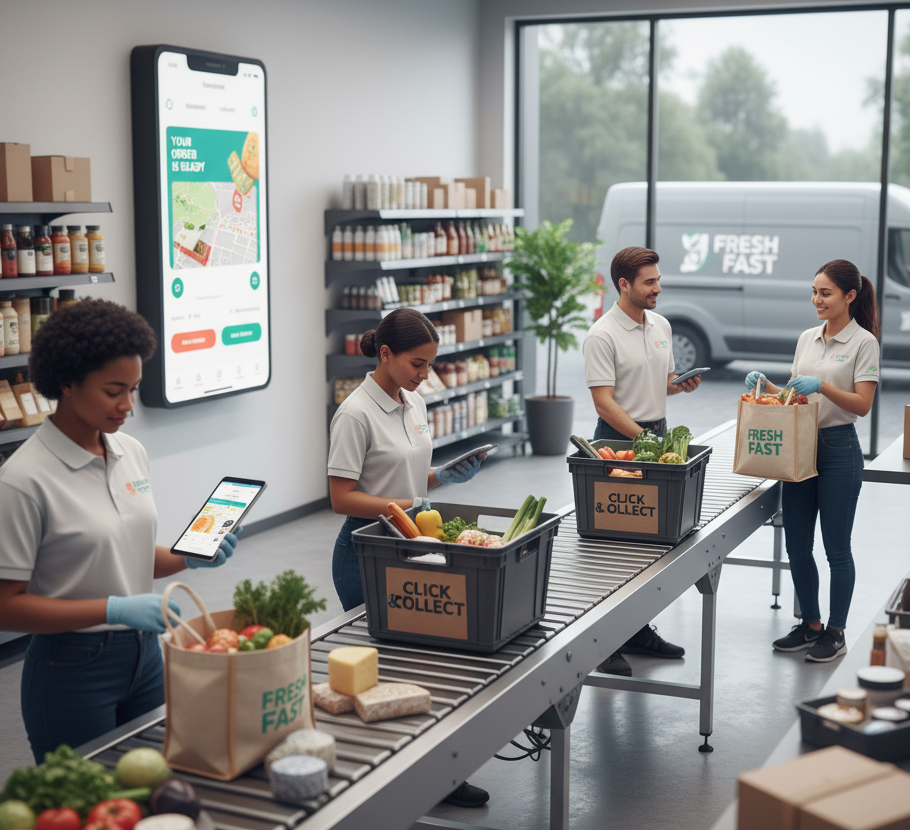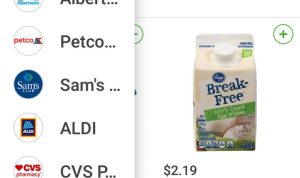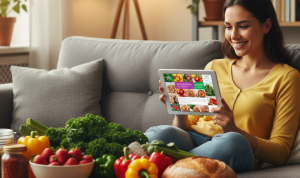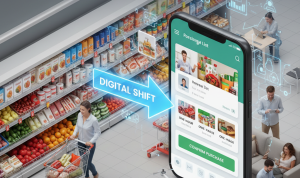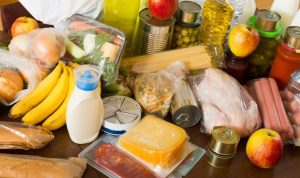The groceries and food sector, a cornerstone of daily life, has undergone a monumental transformation in recent years. What was once a predominantly brick-and-mortar experience has expanded dramatically into the digital realm, reshaping how consumers discover, purchase, and receive their sustenance. This shift presents both immense opportunities and complex challenges for businesses operating in this dynamic market. Understanding the nuances of modern groceries and food sales and transactions is crucial for achieving sustained growth and customer loyalty in an increasingly competitive landscape.
The Evolution of the Groceries & Food Market
For centuries, food procurement was a local affair, centered around markets, small shops, and direct farm sales. The 20th century saw the rise of supermarkets, revolutionizing convenience and selection. However, the 21st century, propelled by technological advancements and global events like the pandemic, has accelerated the adoption of online channels.
Today, consumers expect flexibility. They want the option to browse aisles in person, order online for home delivery, or opt for click-and-collect services. This multi-channel approach, often referred to as “omnichannel retail,” is no longer a luxury but a necessity for businesses striving to capture market share.
Key Drivers of Change:
- Technology: E-commerce platforms, mobile apps, advanced logistics, and data analytics have made online grocery shopping more seamless and efficient.
- Consumer Behavior: Busy lifestyles, a desire for convenience, and increased digital literacy have fueled the demand for online food solutions.
- Pandemic Impact: The global pandemic significantly accelerated the shift to online ordering, with many first-time online grocery shoppers converting into regular users.
- Subscription Models: The rise of meal kit services, recurring grocery deliveries, and specialized food subscriptions has created new avenues for sales.
Strategies for Maximizing Groceries & Food Sales
To thrive in this evolving environment, businesses must adopt comprehensive strategies that address both online and offline channels.
- Robust E-commerce Platform:
- User Experience (UX): A seamless and intuitive website or app is paramount. Easy navigation, high-quality product images, detailed descriptions, and a smooth checkout process are non-negotiable.
- Mobile Optimization: A significant portion of online shopping occurs via mobile devices. Ensure your platform is fully responsive and offers an excellent mobile experience.
- Personalization: Leverage data to offer personalized recommendations, promotions, and tailored shopping experiences based on past purchases and browsing history.
- Efficient Logistics and Fulfillment:
- Last-Mile Delivery: This is often the most challenging and critical part of the online grocery experience. Invest in efficient delivery networks, whether through in-house fleets, third-party logistics (3PL) providers, or a hybrid model.
- Click-and-Collect (BOPIS – Buy Online, Pick Up In Store): Offer convenient pick-up options that cater to customers who prefer to collect their orders.
- Inventory Management: Accurate, real-time inventory tracking is essential to prevent out-of-stock situations and ensure order fulfillment accuracy.
- Cold Chain Management: For perishable goods, maintaining proper temperature control throughout the supply chain is vital for food safety and quality.
- Data-Driven Marketing and SEO:
- Search Engine Optimization (SEO): Optimize your product pages and website content with relevant keywords (e.g., “organic vegetables delivery,” “gourmet food online,” “fresh produce near me”) to rank higher in search engine results.
- Content Marketing: Create valuable content such as recipes, cooking tips, and articles about food sourcing to engage customers and drive traffic.
- Social Media Engagement: Utilize platforms like Instagram, Facebook, and TikTok to showcase products, run promotions, and interact with your audience.
- Email Marketing: Build an email list to send newsletters, special offers, and order confirmations, fostering repeat business.
- Local SEO: For businesses with physical stores, optimize for local searches (e.g., “grocery store [city/neighborhood]”).
- Customer Relationship Management (CRM):
- Feedback Mechanisms: Actively solicit customer feedback through surveys, reviews, and direct communication to identify areas for improvement.
- Loyalty Programs: Reward loyal customers with points, discounts, or exclusive access to promotions to encourage repeat purchases.
- Exceptional Customer Service: Provide multiple channels for support (chat, phone, email) and ensure prompt, helpful responses to inquiries and issues.
- Focus on Freshness and Quality:
- Sourcing: Highlight your commitment to sourcing high-quality, fresh ingredients, whether locally grown or sustainably produced.
- Packaging: Use appropriate packaging that maintains product integrity and freshness during transit.
- Transparency: Be transparent about product origins, nutritional information, and any certifications (e.g., organic, fair trade).
The Transaction Process: Ensuring Seamlessness and Security
The transaction phase is where sales are finalized, and trust is built. A smooth and secure payment process is paramount.
- Multiple Payment Options: Offer a variety of payment methods, including credit/debit cards, digital wallets (Apple Pay, Google Pay), and potentially even “buy now, pay later” services, to cater to diverse customer preferences.
- Payment Security (PCI DSS Compliance): Implement robust security measures to protect customer financial data. Adhere to Payment Card Industry Data Security Standard (PCI DSS) requirements.
- Clear Pricing and Fees: Be transparent about all costs, including product prices, delivery fees, and any taxes, before the final checkout. Hidden fees lead to cart abandonment and erode trust.
- Order Confirmation and Tracking: Provide immediate order confirmations and allow customers to track their orders in real-time, reducing anxiety and improving satisfaction.
- Easy Returns and Refunds: Clearly communicate your return and refund policy. A hassle-free process for dealing with incorrect or damaged orders reinforces customer confidence.
Innovations Shaping the Future of Groceries & Food
The sector continues to innovate, with new technologies and business models emerging:
- AI and Machine Learning: Used for demand forecasting, inventory optimization, personalized marketing, and even automating customer service.
- Vertical Farming and Hyperlocal Sourcing: Reducing supply chain length and ensuring ultimate freshness for certain produce.
- Ghost Kitchens and Dark Stores: Dedicated facilities solely for fulfilling online orders, optimizing efficiency and delivery speed.
- Sustainable Practices: Increasing focus on eco-friendly packaging, reducing food waste, and sustainable sourcing appeals to environmentally conscious consumers.
- Voice Commerce: Integration with smart home devices for hands-free grocery ordering is gaining traction.
Here’s an image depicting modern grocery and food transactions:
Conclusion
The groceries and food sector is experiencing an unprecedented era of change, driven by technology and evolving consumer expectations. Businesses that embrace digital transformation, prioritize customer experience across all channels, and invest in efficient logistics and data-driven strategies will be well-positioned for success. By focusing on both seamless sales and secure transactions, companies can build lasting relationships with customers and navigate the complexities of this essential and ever-growing market. The future of food retail is not just about selling products; it’s about delivering convenience, quality, and an exceptional experience to every plate and pantry.

